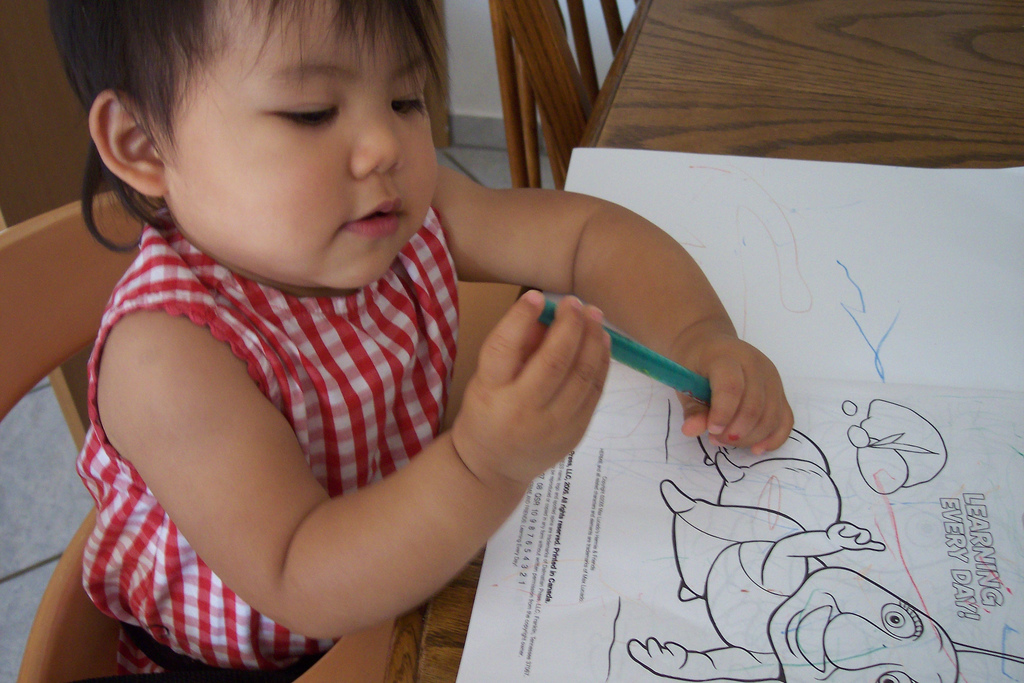
Have a look at this baby girl, coloring in a coloring book. She is enjoying the sensory experience of it, the tactile sensation of having crayons in her hand and exploring the paper.
I was chatting with a beginning composition student recently and I asked him to show me what he’s working on. He offered to show me some theory homework, and this raised again the old issue of theory vs. composition. He seems adept at theory, but is just getting started with composition.
I talked about children like the girl in this picture, who go off into the corner with some crayons and a coloring book. They just start coloring, don’t they? They don’t concern themselves with whether it is “right.” There’s that sensual, enjoyable experience of running your crayons over the page.
Later, someone will tell this child the importance of staying inside the lines. And thus begins a lifetime of our own inner critic asking, “Is it good enough? Is it right?”
Music theory is “the lines” of the coloring book. I’m not saying that it is important to ignore “the rules” or that theory is insignificant. As composers, obviously, we should know where the lines are.
But as composer, also, we don’t let the lines define us. We can compose whatever we want to, for the tactile, sensory experience of it. It’s a good idea to explore strategies that return us to this childlike state!
Leave a Reply